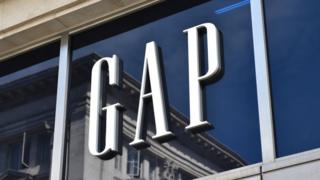Gap to shut shops and hive off Old Navy
 Image copyright
Image copyright
Getty Images
Fashion firm Gap Inc has announced is shutting 230 stores and splitting off its Old Navy brand, a restructuring aimed at “revitalising” the company.
It emerged as new figures revealed that like-for-like sales at Gap continued to fall while Old Navy’s revenue rose.
Old Navy will be a standalone company while a new business, which is yet to be named, will house Gap as well as its other brands including Banana Republic.
Gap Inc said the closures would mainly be in North America.
The firm said it had already closed 55 of its eponymous stores.
That leaves 742 Gap stores globally.
It is not yet clear how many jobs will be lost or where the closures will occur over the next two years.
Revitalise
It is part of a strategy to “revitalise” the brand, and generate more of its sales online, which it hopes will reach 40% of total revenues.
Once once a by-word for cool, sporty, casual wear, and promoted through high-profile advertising campaigns fronted by the likes of Madonna and rapper Missy Elliott, Gap’s popularity amongst the young and fashionable has recently waned.
Image copyright
Getty Images
Missy Elliott and Madonna fronted a Gap advertising campaign in 2003
Cheaper fast-fashion brands such as Zara, H&M and Forever 21 now attract younger shoppers and Gap’s sales have been falling in recent years.
In its latest financial results, Gap Inc said that like-for-like sales at its namesake stores fell by 5% over both the fourth quarter and the full year.
Same store sales were flat for Old Navy in fourth quarter but rose by 3% over 12 months.
Christina Boni, vice president at Moody’s, the rating agency, said: “Old Navy is Gap Inc.’s leading brand comprising 47% of sales in 2018 with margins that lead its portfolio.
“Old Navy continues to outpace Gap Brand and Banana Republic and is one the fastest-growing major apparel brands with comparable stores of 3% in 2018 growing to over $7.8bn in 2018.”
However she cautioned that spinning off Old Navy “reduces the diversification the brand provides to the overall entity”.
In the fourth quarter, operating profit fell to $372m from $396m on sales marginally lower at $4.6bn.



